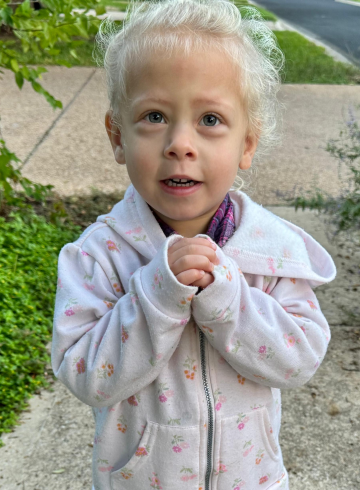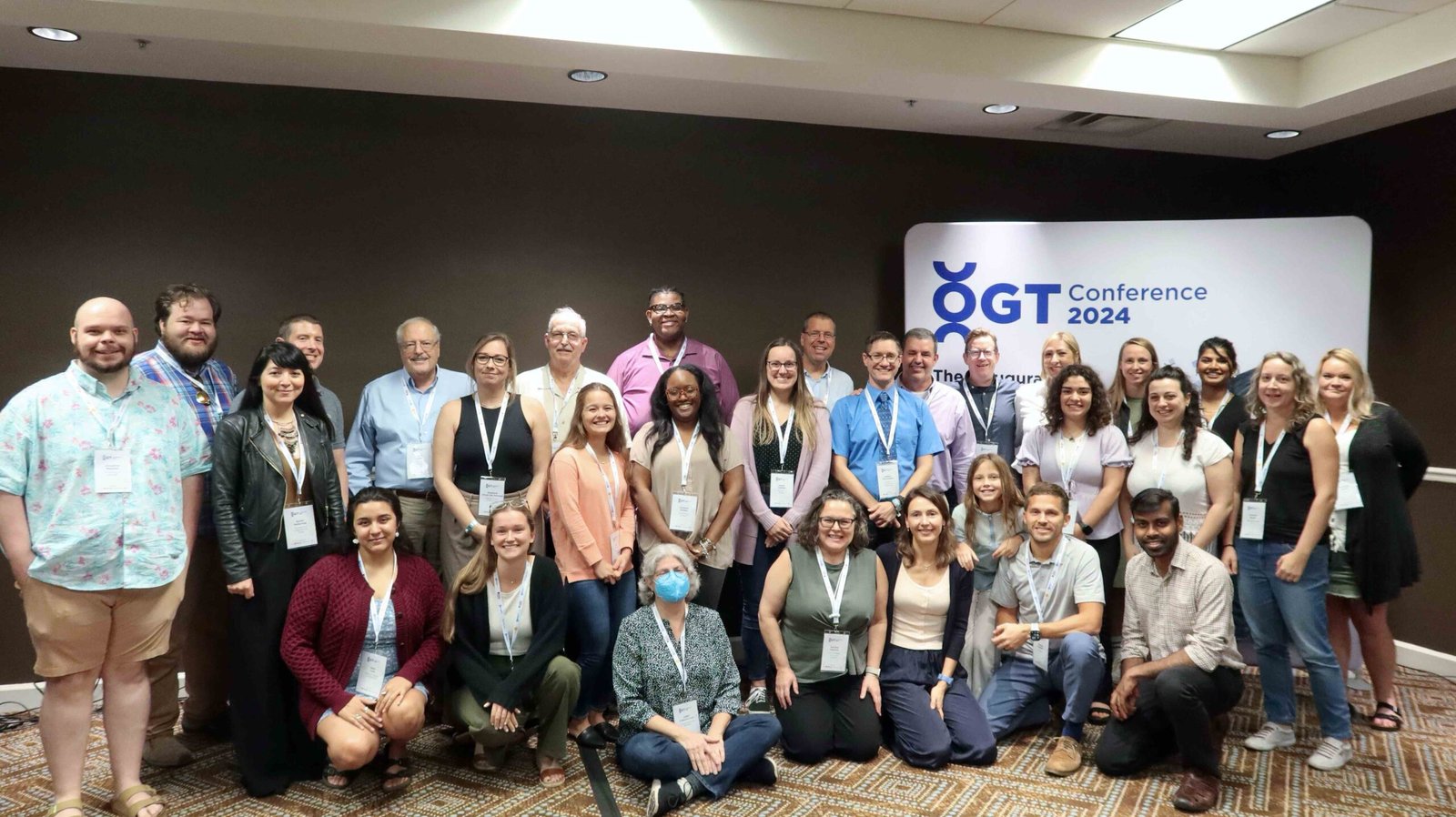The OGT Conference 2024, held on November 9, brought together leading scientists, clinicians, and families affected by OGT-XLID (OGT-CDG) to discuss the latest advancements in research and explore pathways toward treatment. The event, organized by Cure OGT, served as a critical milestone in uniting the research community around this rare and complex disorder.
OGT-XLID is a rare genetic condition caused by mutations in the OGT gene, affecting neurological function, development, and metabolism. Given the limited research and lack of available treatments, CureOGT saw an urgent need to bring together experts from diverse fields—glycobiology, neuroscience, and gene therapy—to define a roadmap for future research and potential therapies.

The objectives of this conference were to:
- Establish a critical path to treatment by identifying research gaps.
- Encourage collaboration between scientists, clinicians, and patient families.
- Define the next steps for preclinical and clinical research efforts.
The event featured expert-led discussions, patient perspectives, and a dedicated workshop focused on advancing therapeutic development. Below is a summary of the key sessions.
The Basics: Understanding OGT and O-GlcNAc – Dr. Gerald Hart

Dr. Gerald Hart provided a foundational overview of OGT (O-GlcNAc transferase) and its role in cellular signaling, metabolism, and neurological function. He highlighted how OGT catalyzes the addition of O-GlcNAc, a critical post-translational modification that regulates thousands of proteins. Key takeaways:
- OGT’s essential role in brain function, including synaptic plasticity and neuronal survival.
- The complexity of OGT mutations, which disrupt cellular processes in ways not yet fully understood.
- The need for further research into OGT-related neurodevelopmental disorders.
What We Know & Don’t Know About OGT-XLID – Dr. Lance Wells

Dr. Wells presented an analysis of known OGT mutations associated with OGT-XLID. His session focused on:
- The diversity of mutations across different OGT domains.
- The challenge of classifying OGT-XLID as a congenital disorder of glycosylation (CDG) versus an intellectual disability disorder.
- The lack of a biomarker to track disease progression and treatment effects.
His key conclusion: The field needs better cellular models and biomarkers to understand disease mechanisms and assess potential therapies.
Animal Models and Insights from OGT-XLID – Dr. Daan van Aalten

Dr. van Aalten’s team has developed OGT-XLID mouse models to investigate disease mechanisms. Findings from his lab showed:
- OGT mutations alter brain development, leading to differences in cortical thickness.
- Behavioral changes in mice mirror human symptoms, including cognitive and motor impairments.
- The OGT-OGA regulatory balance is disrupted, further complicating the disease’s biological basis.
His research strongly supports using mouse models for preclinical studies and testing potential treatments.
OGT, Glycosylation, and Therapy – Dr. Hudson Freeze
Dr. Freeze examined OGT within the broader landscape of glycosylation disorders. Key insights:
- The debate over whether OGT-XLID should be classified as a CDG.
- Potential metabolic therapies (e.g., substrate supplementation) that might help modulate OGT activity.
- The importance of patient registries and natural history studies to guide therapeutic development.
From Bench to Bedside: Clinical Readiness – Dr. Andy Edmondson

Dr. Edmondson outlined what is required to move from basic research to clinical trials:
- Defining the therapeutic target – Is it OGT enzymatic activity, protein interactions, or downstream pathways?
- Developing reliable biomarkers – What can be measured to track disease progression and treatment response?
- Exploring gene therapy – Can AAV-based delivery restore normal OGT function?
- Regulatory considerations – How to design clinical trials for a rare disease with diverse genetic mutations?
OGA Inhibitors and Biomarker Development – Dr. Natasha Zachara & Dr. Stephanie Olivier-Van Stichelen

This session focused on the potential of OGA inhibitors and their role in modulating O-GlcNAc levels as a therapeutic approach. Key takeaways included:
- The development of biomarkers to track OGT dysfunction and treatment efficacy.
- The challenges in designing OGA inhibitors that are both effective and safe for long-term use.
- Potential synergies between OGA inhibition and other treatment modalities, including gene therapy.
Gene Therapy: Latest Developments – Dr. Liujiang Song
Dr. Song presented advancements in gene therapy and how they might apply to OGT-XLID treatment. Highlights from the session:
- AAV-mediated gene therapy as a potential tool to restore OGT function.
- Challenges in delivering gene therapy to the brain and achieving sustained therapeutic effects.
- The importance of preclinical validation before moving toward human trials.
Rare Diseases & FDA Incentives – Dr. Sandra Retzky

Dr. Retzky, an expert on FDA regulations for rare diseases, outlined available incentives and resources to accelerate drug development. Key points included:
- Fast-track and orphan drug designations for rare disease therapies.
- Regulatory pathways that can help bring treatments to clinical trials more quickly.
- The importance of patient advocacy and engagement in the approval process.
Workshop: The Critical Path to Treatment
The conference concluded with an interactive workshop, where researchers and families collaboratively mapped out next steps. Discussions centered around:
- The urgent need for a biomarker to measure treatment efficacy.
- Data sharing and collaboration between research labs.
- Exploring OGA inhibitors and gene therapy as potential treatment avenues.
- The importance of securing funding and expanding research networks.
This session reinforced the idea that while scientific progress is slow, coordinated efforts between families, researchers, and funding bodies can significantly accelerate the path toward treatment.
Next Steps: What the Research Community Needs to Do

Following this groundbreaking conference, the next steps for the scientific community are clear:
- Develop and validate a biomarker for OGT-XLID.
- Expand research on OGA inhibitors and substrate-based therapies.
- Test gene therapy approaches in preclinical models.
- Build a global patient registry to track disease progression and natural history.
- Establish multi-institutional collaborations to combine expertise across fields.
- Secure research funding to support clinical trials and experimental therapies.
How You Can Help
- Researchers: Contribute to ongoing OGT-XLID studies.
- Clinicians: Encourage patient participation in registries and trials.
- Families & Advocates: Raise awareness and support fundraising initiatives.
The OGT Conference 2024 was a major step forward, but our work is far from over. CureOGT remains committed to driving research, fostering collaboration, and ensuring that no family faces this challenge alone. Together, we can push toward a future where effective treatments—and ultimately a cure—are within reach.

Stay connected with us at CureOGT.org and follow our progress!

